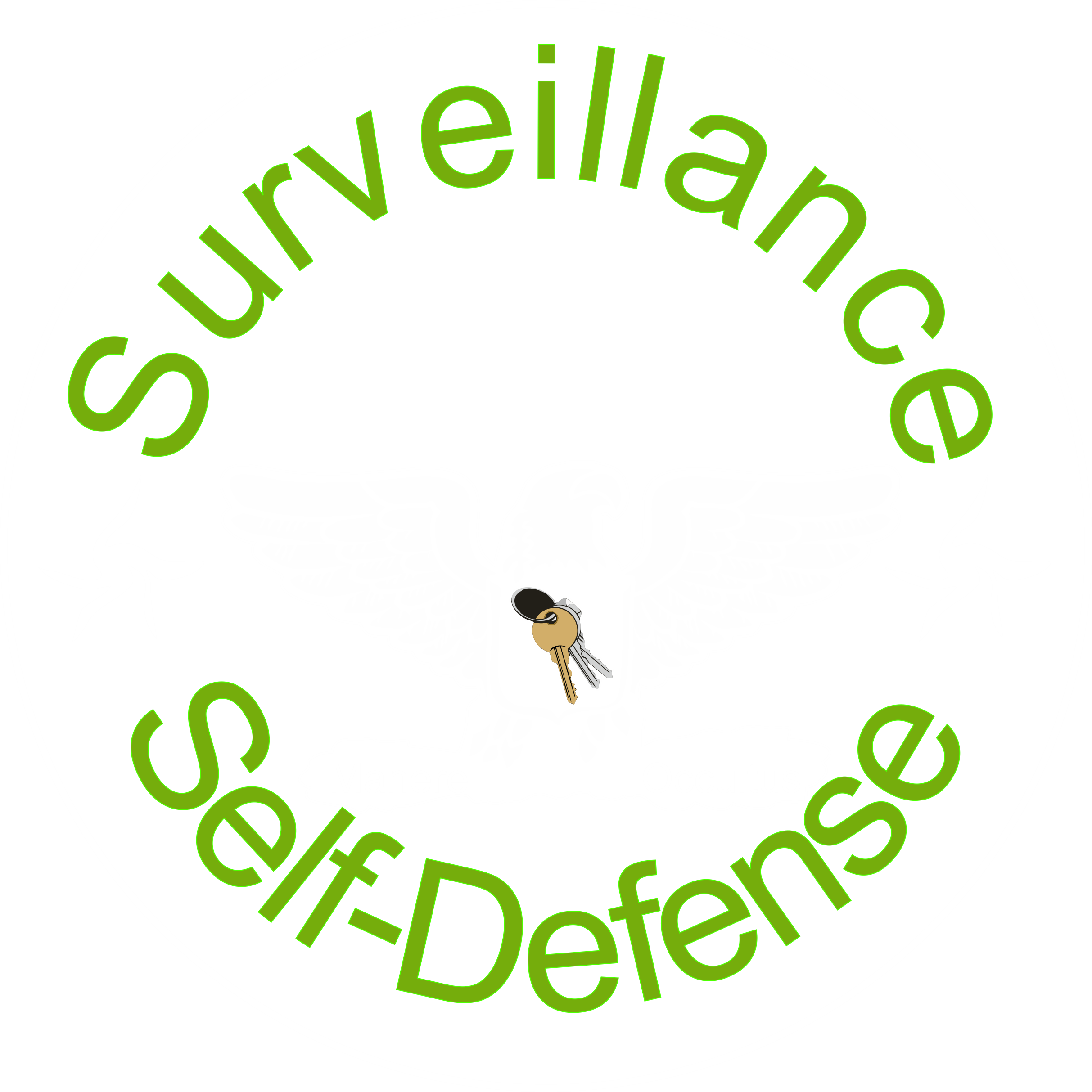Are inflexible expenses silently draining your finances? From monthly rent and utility bills to insurance premiums and loan payments, inflexible expenses can significantly impact your financial health. These unavoidable expenses can gradually tighten their grip on your budget, leaving little room for savings, flexibility, or growth. Whether managing your household budget or running a business, understanding and controlling fixed costs is a key step toward achieving financial stability and long-term success.
Did you know that fixed costs can make up as much as 70% of a household’s monthly budget and nearly half of a small business’s operating expenses? When left unchecked, these expenses can become even harder to manage over time, limiting your ability to adapt to unexpected financial changes. However, with the right strategies, you can take control, increase cash flow, build savings, and allocate resources toward your priorities.
In this article, we’ll explore effective ways to master inflexible expenses. From reviewing contracts and renegotiating services to adopting minimalist budgeting practices, you can gain the tools to master inflexible costs and improve your financial flexibility.
What are Inflexible Expenses?

Inflexible expenses refer to costs that remain consistent regardless of changes in your financial circumstances. These recurring payments, such as rent, mortgage, or insurance premiums, are non-negotiable and must be paid regularly. Their predictability makes them a vital part of financial planning, but they can also account for a large portion of your budget, leaving little room for discretionary spending.
Understanding the distinction between fixed and variable costs is crucial. Fixed costs, like loan payments and insurance, stay constant month after month. In contrast, variable costs, such as groceries or entertainment, fluctuate based on usage or spending habits. By effectively managing fixed expenses, you can free up resources for emergencies, investments, or personal goals.
Why Managing Fixed Costs is Important
Inflexible expenses often represent a significant share of both personal and business budgets. For individuals, these costs can strain finances, making it difficult to save or handle unexpected bills. For businesses, high fixed costs can limit flexibility and expose vulnerabilities during economic downturns or revenue fluctuations. The higher your inflexible expenses, the less adaptable you are to changes in your financial environment.
On the other hand, reducing inflexible expenses can unlock several benefits, including increased savings, improved cash flow, and more opportunities for strategic investments. By controlling these costs, businesses can scale operations, innovate, and navigate financial challenges more effectively.
Now that we understand why it’s important to manage fixed costs, let’s dive into some smart strategies that can help you take control and reduce these expenses.
Table of Contents
1. Conduct a Comprehensive Expense Audit

A thorough audit of your expenses is the first step toward mastering inflexible expenses and reclaiming control over your budget. By examining your financial records, you can identify areas where adjustments or cuts can be made.
Step-by-Step Guide on Conducting an Audit
- Collect All Financial Statements: Start by gathering all your financial statements—bank statements, credit card bills, and receipts—from the past three to six months. This will provide a comprehensive view of your spending habits, helping you identify both fixed and variable expenses. According to a 2019 survey by the National Endowment for Financial Education, 48% of Americans don’t track their spending, which often leads to financial strain. Collecting your financial data gives you the insight needed to understand where your money is going.
- Categorize Expenses into Fixed and Variable: After gathering your statements, categorize your expenses into fixed costs (like rent, utilities, insurance, and loan payments) and variable costs (like groceries, entertainment, or dining out). This step helps you identify which costs are inflexible and which ones have room for adjustment. A study by Gallup found that 33% of Americans struggle to manage monthly bills and expenses, often due to a lack of awareness about their fixed costs.
- Analyze Historical Spending Patterns: Review your spending over the past few months to identify trends or areas where you may be overspending. Are there certain months with unusually high fixed costs? Are there recurring charges that could be reduced or eliminated? This analysis will help you spot patterns and pinpoint areas where you can make cost-saving adjustments.
Importance of Understanding Your Spending Habits
Understanding your spending habits is crucial when it comes to managing inflexible expenses. By knowing where your money is going, you can identify unnecessary expenses or areas where you’re spending more than necessary. Maybe there are subscriptions you no longer use, or you’re paying for services that no longer align with your needs. Identifying these expenses gives you the opportunity to make strategic cuts and free up money for savings or investment.
An expense audit also helps you spot areas where you may be overpaying, such as insurance premiums or loan interest rates that could be renegotiated or reduced.
2. Negotiate Fixed Costs
One of the most effective ways to reduce inflexible expenses is by actively negotiating with service providers. Many people overlook this strategy, but with the right approach, you can significantly lower bills for essential services.
Tips for Negotiating Bills and Services
- Contact Service Providers for Better Rates: Reach out to your service providers—such as internet, phone, insurance, and utilities—and ask if they offer any discounts, loyalty rewards, or promotional rates. Many companies are willing to lower your bill to keep you as a customer. Simply mentioning competitor offers can give you leverage. For example, if your internet bill has increased over time, call your provider and reference a competitor’s lower rate. In many cases, providers may offer discounts, such as a $30 monthly reduction, resulting in $360 in annual savings.
- Bundle Services for Discounts: Consider bundling services like internet, phone, and cable to take advantage of package deals. Providers often give discounts when you combine multiple services, reducing your overall monthly expenses.
- Review and Renegotiate Contracts Annually: Set a reminder to review your contracts every year. Prices often increase over time, but providers may offer better deals to long-term customers or introduce new pricing plans that could lower your fixed costs. A survey by Consumer Reports found that 83% of people who negotiated their bills successfully lowered their costs, especially for services like cable, internet, and insurance.
Negotiating fixed costs not only saves money but also encourages smarter financial management. Small changes like renegotiating service rates can make a noticeable difference in your monthly budget, freeing up funds for savings or investments.
3. Refinance Loans and Mortgages
Refinancing your loans or mortgage can be a powerful strategy to master inflexible expenses and improve your overall financial health. By securing a lower interest rate or adjusting loan terms, you can significantly decrease your monthly payments and free up cash for savings or investments.
Benefits of Refinancing
- Lower Interest Rates: Refinancing at a lower interest rate can drastically reduce the total cost of your loan. Even a 1-2% reduction in your mortgage rate can lead to thousands in savings over the loan’s lifetime.
- Reduced Monthly Payments: By refinancing into a longer loan term or securing better terms, you can lower your monthly payments, making your budget more manageable.
- Debt Consolidation: Refinancing can also consolidate high-interest debts into a single, lower-interest loan, simplifying payments and cutting costs.
How to Refinance Smartly
- Refinance When Interest Rates Drop: Keep an eye on market interest rates. Experts suggest refinancing if you can lower your rate by at least 0.75% to 1%, which can yield meaningful savings.
- Improve Your Credit Score Before Applying: A higher credit score can qualify you for better rates. Pay down debt and avoid new credit inquiries before refinancing.
- Compare Lenders and Loan Offers: Don’t settle for the first offer. Compare loan terms from multiple lenders to find the most favorable rates and fees.
- Factor in Closing Costs: Refinancing comes with costs like application fees, appraisal fees, and closing costs, which typically range from 2% to 5% of the loan amount. Calculate your break-even point to ensure refinancing is worth it.
Refinancing can be a strategic move when done at the right time, offering long-term savings and improved cash flow. With careful planning, this step can help lower your inflexible expenses and put you on a path to greater financial stability.
4. Downsize or Relocate
Downsizing or relocating can be a powerful strategy to reduce fixed costs. Whether it’s moving to a smaller home or shifting to an area with a lower cost of living, these changes can free up funds for savings, investments, or debt reduction.
Weighing Pros and Cons of Downsizing
- Pros: Downsizing to a smaller home or a less expensive apartment can significantly lower your mortgage, rent, utilities, and maintenance costs. For instance, many people have saved up to 30% on housing by moving to a smaller or more affordable space.
- Cons: However, downsizing may come with trade-offs in terms of space, comfort, and location. You might have to adjust to a less spacious living environment or sacrifice proximity to work, family, or other conveniences.
Alternatives to Downsizing
- Relocate to Lower-Cost Areas: If downsizing is not an option, consider relocating to a city or region with a more affordable lifestyle. Cost of living varies significantly between locations, and moving to an area with lower housing costs, transportation expenses, or taxes can result in substantial savings. For example, a move from a high-cost city like New York to a more affordable place like Atlanta could reduce housing costs by 50% or more.
By either downsizing or relocating, you can make significant progress in reducing your inflexible expenses, allowing for greater flexibility in your financial plans.
5. Eliminate Unnecessary Subscriptions

Recurring subscriptions can quietly inflate your inflexible expenses without adding real value. Identifying and canceling unused or unnecessary services is a simple yet effective way to cut costs and improve your financial health.
Common Subscriptions to Review
- Streaming Services: Many households pay for multiple platforms (Netflix, Hulu, Disney+, etc.) but only regularly use one or two.
- Gym Memberships: If you rarely visit the gym, consider canceling or switching to at-home workout options.
- Software Subscriptions: Business tools, apps, or online services that no longer serve your needs can quietly drain funds.
- Subscription Boxes: Meal kits, beauty boxes, and other subscription services can be enjoyable but often nonessential.
- Bank Statements Review: Regularly reviewing your bank and credit card statements can reveal forgotten subscriptions.
Quick Checklist to Evaluate Subscriptions
- Do I use this service regularly?
- Is there a cheaper or free alternative?
- Does this subscription align with my current goals?
- Can I pause or downgrade the plan instead of canceling?
By consistently evaluating and eliminating unnecessary subscriptions, you can significantly lower your fixed costs and redirect those savings toward more meaningful financial goals.
6. Embrace a Zero-Based Budgeting Approach
Zero-Based Budgeting (ZBB) is a highly effective financial strategy that allocates every dollar of income to a specific purpose—whether it’s for essential spending, savings, or investments. The goal is to ensure your income minus expenses equals zero, leaving no room for unaccounted spending. This method is particularly useful for managing inflexible expenses and curbing unnecessary costs.
Step-by-Step Guide to Creating a Zero-Based Budget
- Determine Your Total Monthly Income
- Compile all sources of income, such as salary, freelance earnings, side hustles, and passive income streams.
- Categorize Your Monthly Expenses
- Begin with fixed expenses like rent, utilities, insurance premiums, and loan repayments.
- Next, outline variable expenses such as groceries, transportation, and entertainment.
- Assign a Role to Every Dollar
- Distribute your income across all expense categories, ensuring every dollar is accounted for. Prioritize essential expenses and savings before allocating funds to discretionary spending.
- 4. Review and Adjust Regularly
- Periodically assess your budget and modify it based on unexpected expenses, income fluctuations, or changing financial priorities.
Why Zero-Based Budgeting is Effective for Managing Fixed Expenses
By dedicating every dollar to a purpose, zero-based budgeting ensures that fixed costs—such as rent and utilities—are prioritized. This disciplined approach prevents overspending on non-essential items, creating room for savings and emergency funds.
Additionally, this strategy provides greater insight into your spending habits, making it easier to identify areas for cost-cutting and financial optimization.
Adopting zero-based budgeting can revolutionize your financial management, fostering discipline and enabling you to achieve long-term stability and security.
7. Use Technology for Smarter Financial Management

In the digital age, technology has revolutionized the way we manage our finances. For mastering inflexible expenses and reducing fixed costs, leveraging financial management tools and apps is not just convenient—it’s essential. These tools provide a streamlined approach to budgeting, tracking spending, and identifying areas where costs can be reduced, offering a clearer path toward financial stability.
Benefits of Financial Management Tools
Financial apps and tools simplify the often overwhelming task of budgeting and expense tracking. They offer:
- Automation: Automatically categorize transactions, saving you time and effort.
- Tracking: Provide real-time insights into spending habits to help you stay within budget.
- Notifications: Send reminders for due payments, preventing late fees.
- Subscription Monitoring: Detect unused or forgotten subscriptions that can be canceled to save money.
Top Financial Management Tools to Help Reduce Fixed Costs
- Mint: This all-in-one app tracks your expenses, categorizes spending, and sends alerts for upcoming bills. With Mint, you can also set spending limits and savings goals, helping you pinpoint opportunities to cut costs.
- YNAB (You Need a Budget): Known for its zero-based budgeting approach, YNAB encourages users to allocate every dollar a purpose. This tool helps you prioritize fixed costs, avoid overspending, and build financial discipline.
- PocketGuard: Designed for simplicity, PocketGuard shows how much money you have left after covering bills, goals, and necessities. It identifies recurring subscriptions and areas where you can save.
- Rocket Money (formerly Truebill): Ideal for subscription management, Rocket Money finds unwanted or forgotten services, helps cancel them, and even negotiates lower rates for recurring bills.
How Technology Helps Reduce Fixed Costs
- Spot Hidden Spending Patterns: Many financial tools analyze your spending habits, showing areas where you might be overspending on fixed costs like subscriptions, utilities, or insurance premiums.
- Optimize Bill Payments: Apps like Rocket Money can negotiate lower rates for utilities, internet, and other recurring bills, directly contributing to reduced fixed expenses.
- Encourage Smarter Financial Decisions: By presenting a clear picture of your income and expenses, these tools motivate users to make data-driven decisions about their spending.
- Automate Savings: Apps often integrate savings features, where small amounts are automatically saved toward specific goals, ensuring financial discipline without extra effort.
Integrating Financial Tools for Better Control
By incorporating these tools into your daily routine, you can streamline your financial management process and take actionable steps toward mastering inflexible expenses. Whether you’re managing a household or running a business, technology provides the insights and automation necessary to cut costs, free up cash flow, and achieve greater financial freedom.
Embracing technology is a smart strategy for mastering inflexible expenses and staying on top of your budget. With the right tools, you’ll not only save time but also gain the financial clarity needed to make informed decisions and optimize your spending.
8. Optimize Operational Efficiency
Optimizing operations is a highly effective way to reduce fixed costs and enhance financial flexibility. By improving processes, cutting waste, and boosting productivity, businesses and individuals can generate significant savings and improve their financial outlook.
Effective Strategies to Optimize Operational Efficiency:
- Streamline Workflow: Evaluate your current workflows for inefficiencies. Automating tasks, consolidating functions, or improving communication between departments can reduce labor costs and increase productivity. For example, companies that adopted automation tools reported a 20-30% increase in efficiency, helping them cut operational expenses.
- Cut Waste: Reducing waste in terms of energy, materials, and time directly impacts fixed costs. Implementing energy-efficient practices in production or retail operations can significantly lower utility costs, and better resource management can minimize inventory waste.
- Enhance the Supply Chain: Review and optimize your supply chain processes to cut unnecessary costs. Negotiating better supplier contracts, consolidating shipments, or implementing just-in-time inventory systems can reduce both storage and transportation costs.
By optimizing operational efficiency, you can free up financial resources, improve overall profitability, and ensure your operations are both cost-effective and sustainable.
9. Utilize Technology and Automation
Incorporating technology and automation into your operations can be a game-changer for mastering inflexible expenses. By automating repetitive tasks and optimizing processes, businesses and individuals can lower labor expenses, improve efficiency, and enhance overall productivity.
How Automation Saves on Labor Costs:
- Automating Routine Tasks: Adopting software solutions for tasks such as invoicing, payroll, and inventory management can drastically cut down on manual labor. Automation minimizes human error and speeds up processes, allowing staff to focus on higher-value activities. For instance, companies that use automated payroll systems have seen up to 40% reduction in processing time, which translates to significant cost savings.
- Efficient Business Software: Leveraging customer relationship management (CRM) tools, project management platforms, and automated email marketing systems can help streamline day-to-day operations. These technologies reduce the need for additional staff and improve operational flow, ultimately driving down fixed costs.
The Long-Term Benefits of Investing in Technology:
Beyond immediate savings, investing in technology offers long-term benefits, such as greater scalability and the ability to adapt to market changes more swiftly. Automation also helps reduce errors, improve customer experiences, and support business growth without inflating operational expenses.
By embracing technology and automation, you can optimize your resources, lower costs, and position your business for sustainable growth.
10. Review Staffing Needs Regularly
Regularly assessing your staffing needs is essential for managing labor costs and maintaining operational efficiency. By carefully evaluating your workforce, you can avoid overstaffing and ensure you’re spending your budget in the most effective way possible.
Why Assess Staffing Levels?
- Avoid Overstaffing: Overstaffing can quickly inflate fixed costs and strain your financial resources. It’s important to conduct regular audits of your team size and identify areas where roles might be redundant or combined to reduce unnecessary costs.
- Outsource When Needed: Instead of hiring full-time employees for every role, consider outsourcing specialized tasks that don’t require a permanent staff member. Outsourcing allows you to scale labor costs based on demand, providing financial flexibility.
Adapting Staffing to Market Changes:
- Monitor Shifting Business Demands: Business needs fluctuate with market conditions, customer demands, or seasonal changes. Staying proactive about these shifts enables you to adjust your workforce accordingly—whether by reducing staff during slower periods or ramping up resources when demand increases.
- Utilize a Flexible Workforce: Consider part-time, freelance, or remote workers to provide the flexibility to adapt to changing business needs. This approach allows you to maintain optimal staffing levels while minimizing labor costs during slower business cycles.
By regularly reviewing staffing needs and being responsive to changes in the business landscape, you can keep labor costs in check and ensure that your operations remain efficient, cost-effective, and scalable.
Common Pitfalls to Avoid
While working to reduce fixed costs and manage inflexible expenses, it’s important to be aware of some common mistakes that can undermine your efforts. By recognizing and avoiding these pitfalls, you can stay on track toward financial stability.
- Emotional Spending: One of the most frequent traps people fall into is emotional spending, where purchasing decisions are made impulsively due to stress, boredom, or temporary emotions. This kind of spending can quickly add up, impacting your ability to reduce fixed costs and save money. It’s important to make purchases based on necessity, not emotional impulses.
- Neglecting Regular Financial Tracking: Without consistently tracking your expenses, it’s easy to overlook small but impactful costs that may contribute to higher fixed expenses. Regularly reviewing your financial situation ensures that you stay on top of your spending, allowing you to make informed decisions and identify areas where cuts can be made.
Conclusion

Mastering the management of inflexible expenses and fixed costs is a crucial step in building a strong financial foundation. Whether you’re reducing fixed costs for personal savings or enhancing business efficiency, understanding your expenses and implementing strategies to lower them is key to financial health.
The strategies outlined in this article—such as conducting thorough expense audits, renegotiating contracts, and leveraging technology—offer practical ways to manage your inflexible expenses effectively. Now is the time to put them into action.
Taking control of your finances can be empowering and transformative. By managing inflexible expenses, you can boost your savings, improve cash flow, and create opportunities for future growth. Start today, and see how these changes can lead to greater financial freedom and peace of mind.





























